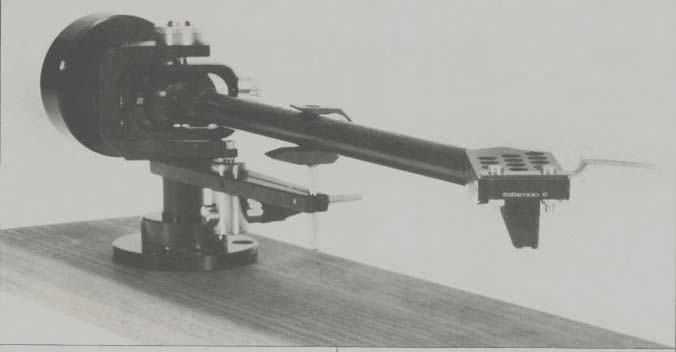
Manufacturer's Specifications
Tonearm Overall Length: 10.4 inches.
Pivot-Stylus Distance: 9 inches.
Recommended Tracking Force Range: 0 to 1.5 grams.
Total Cable Capacitance: 100 pF.
Price: $1 200 00
Cartridge Type: Moving coil.
Cantilever: Sapphire tube.
Output Voltage: 0.26 mV at 1 kHz, 5 cm, S.
Internal Impedance: 9.2 ohms.
Recommended Load Impedance: 40 to 100 ohms.
Frequency Response: 10 Hz to 60 kHz.
Channel Separation: Greater than 30 dB at 1
Channel Balance: Within 0.5 dB.
Compliance: 15 x 10^-6 cm/dyne.
Recommended Tracking Force Range: 1.5 to 2.5 grams.
Stylus Type: Line contact.
Tip Dimensions: 0.2 x 1.2 mil.
Weight: 6.3 grams.
Price: $300.00.
Company Address: P.O. Box 5046, Berkeley, Cal. 94705.
Sumiko is an American company located in Berkeley, California which both imports and manufactures high-quality audio products. A few years ago David Fletcher, one of the principals of Sumiko and who has a background in physics (he worked at Lawrence Berkeley Laboratory of the University of California), decided that tonearm design could be improved if both inertial stability and energy transmission problems could be solved simultaneously. For a number of years, he made a study of the problems which cause tone-arms to degrade the quality of sound. He then collaborated with Duncan Davidson, a master machinist who had turned out critical parts for the NASA lunar lander and deep space telescopes, and after two years of design and development "The Arm" was produced. It was later given the model number MDC-800. The pride which prompted Dave Fletcher to call it "The Arm" is certainly justified to a great extent as revealed by the technical measurements which I performed and by the comments of the listening panel.
MEASURED DATA

First Impressions
I must confess that, even though I have a laboratory full of test equipment, when I first unpacked the Sumiko MDC-800 tonearm, I immediately made some quick tests by hand, ones which any of you can also do. First I gripped the tonearm base with one hand and the arm tube in the other, and then pushed and pulled the arm tube to see if I could detect any play in the bearings. Then I tapped the arm tube with my finger nail. I was impressed. I could detect no play in the bearings and the arm tube emitted a short tick sound when tapped. After I had mounted the counterweight on the rear of the arm tube, I tapped the arm again and the tick sound was even quieter. Loose bearings and resonant arm tubes will color the sound reproduction and although some tonearms with these problems can be euphonic, when used with certain other audio components, they are not truthful.
The MDC-800 is not one of these.
Design Background
Dave Fletcher's basic design goal was to cause mechanical energy, transmitted to the arm by the phono cartridge while playing a record, to be directed from the headshell through the arm pipe, the bearings, and the arm pillar to the turntable suspension, where It would be dissipated. One idea was to use the same material for the headshell, arm pipe, and pillar, since the velocity of energy propagation would be the same all along the transmission path and reflected energy would be reduced. Such energy reflections can occur when the transmission path is interrupted by junctions between materials which have different energy-velocity characteristics The couplings between the head-shell and bearing parts to the arm pipe are made by rigidly joining them using an expansion and contraction technique, rather than by using screws or adhesives as is usually done.
This is accomplished by making the opening in the head-shell slightly undersize and the diameter of the arm tube slightly oversize, then heating the headshell so that it expands while cooling the arm tube so that it contracts. The two parts are then brought together, aligned, and allowed to return to normal temperature. This causes the two parts to be rigidly joined, and since they are made of the same material, they will expand or contract together and always maintain the same rigid relationship. This technique also means that there is no intermediary material to reflect energy back to the cartridge and be picked up as delayed energy to blur the details of the sound.
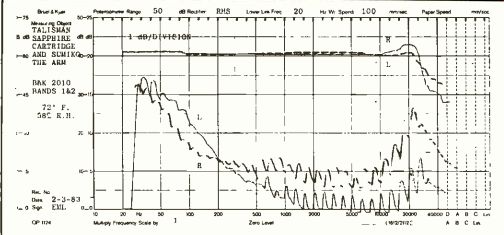
Fig. 1-Frequency response and interchannel crosstalk, B & K 2010, of
arm and cartridge.
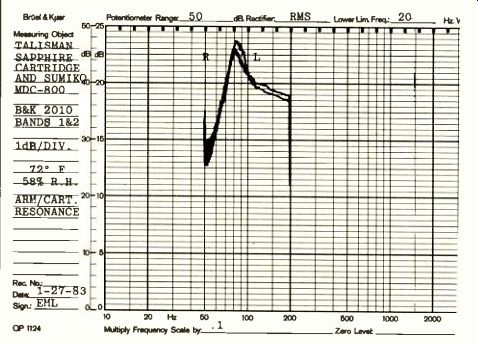
Fig. 2-Low-frequency tonearm cartridge resonance is at 8 Hz with a "Q" of
3.2, B & K 2010.
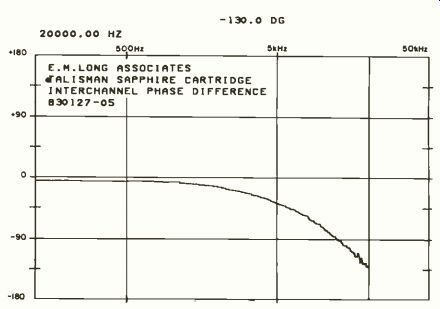
Fig. 3-Interchannel phase of tonearm and cartridge as a function of frequency
(B & K 2011 pink noise). Maximum phase shift is 130° at 20 kHz, equivalent
to 18 µS.
Features
The MDC-800 is a dynamic-balance type, which uses a counterweight to balance the mass of the cartridge and a spring to adjust the tracking force. This technique would allow you to play a record on a turntable hung upside down and, indeed, this is exactly how Audio Empire used to demonstrate their tonearm at audio shows back in the '60s.
While playing records upside down is not generally recommended (except in Australia where it corrects for reversals in absolute polarity), it does show the immunity of such a design to outside forces which could affect performance.
Six counterbalances of different mass are provided so that the arm can be set up for cartridges of different mass. This in done to insure that, when the tonearm is balanced, the counterweight is near the arm pillar, which minimizes inertia in both the horizontal and vertical planes. This also reduces the effects of record eccentricity and warp. The vertical and horizontal bearings are equidistant from the pivot point of the tonearm and this, with the very low bearing friction, further reduces such effects. Each counterweight consists of a container with lead shot and epoxy, which is locked to a mounting hub. The mounting hub is decoupled from the tonearm by a two-stage damper which absorbs energy and keeps it from reflecting back down the arm tube to the cartridge. The headshell is machined from a solid block of aluminum and the arm tube is grain oriented by drawing it from heavier gauge aluminum tubing. The gold-plated cartridge clips are machined, rather than stamped, and are silver-soldered to the silver-plated copper arm-tube wires. A short section of litz wire carries the signal around the pivot bearings where it is silver soldered to the arm pillar wiring, which, again, is silver-plated copper wire. MIL-spec connectors are used at the base of the pillar and on the detachable cable, which has gold-plated phono plugs at the other end. The mounting base is milled to provide a concave section directly opposite the set screw. After the arm height is adjusted, the screw is tightened, locking the arm in a three-point mount which allows no play.
Locating and mounting the MDC-800 tonearm on the turntable are made easy by a solid-aluminum arm-mounting tool specially made and designed for the MDC-800. The tool also allows the cartridge to be mounted to the tonearm and precisely adjusted while away from the turntable, which means that changing cartridges is easy. In fact, because of this tool, the MDC-800 is the easiest tonearm to set up and to change cartridges on that I've ever seen.
The Talisman S, which is manufactured to Sumiko specifications, is a moderate-compliance, moving-coil cartridge with a line-contact stylus set in a sapphire-tube cantilever.
The letter after the name stands for the material used for the cantilever; there are also A and B models which use aluminum and boron respectively. The A model uses an elliptical stylus while the B and S models use a line-contact stylus.
The solid-metal cartridge body has been designed to fit as tightly as possible around the working parts to minimize any vibrational effects which might be excited by mechanical or acoustical energy. A second-generation samarium-cobalt magnet together with a single pole piece is used in what Sumiko calls a Direct Field Focus design which causes the magnetic field to be strongest at the coil, without the normally required yokes.
Measurements and Listening Tests

Fig. 4--Interchannel right channel, B & K 2011 phase of cartridge, left
vs. Band 7 pink noise.

Fig. 5--Tracking of arm and cartridge at 1 kHz, 20 cm/S lateral modulation,
with 1.8-gram tracking force, B & K 2010.
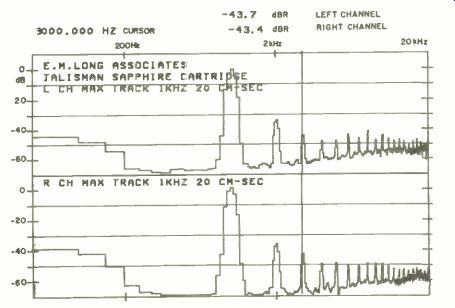
Fig. 6--Spectral components caused by slight mistracking of 1-kHz signal
shown m Fig. 5. Level of third harmonic (3 kHz) is 0.63%. Note increase in
output at 6th and 8th harmonics (see text).
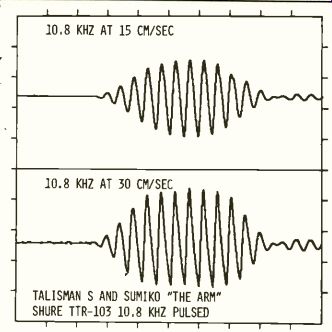
Fig. 7--Arm/cartridge output at 15 cm/S and 30 cm/S, 10.8-kHz pulse test.
Note slight compression of signal at 30 cm/S, a very high level.
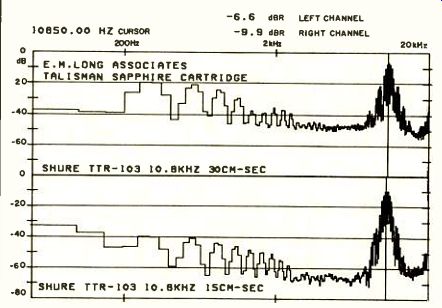
Fig. 8--Spectrum of distortion products for 15- and 30-cm/S signals shown
in Fig. 7.
Frequencies above 200 Hz are at least 30 dB down for the 15 cm/S signal, but increase in level for 30 cm/S signal (see text).
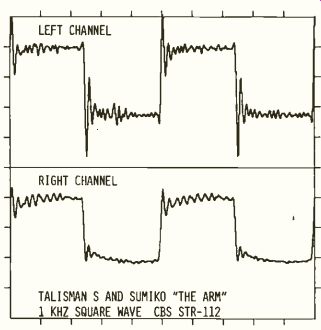
Fig. 9--Arm/cartridge output for 1-kHz square wave, CBS STR-112.
The technical measurements and listening tests were made with the Sumiko MDC-800 tonearm mounted on the SOTA turntable which I reported upon previously. The technical tests were made before the listening sessions, to insure that the tonearm/cartridge combination was adjusted for maximum performance. This also insures that no potential problems were overlooked which could effect the listening evaluations. During the listening sessions, I used the Sumiko BA-20 stabilizer clamp on each record. All the interconnections between components were treated with Sumiko's Tweek, a fluid which, by increasing contact area and lowering resistance, increases the clarity and definition of the reproduced sound.
Figure 1 shows the response and crosstalk for the Talisman S cartridge and the MDC-800 tonearm and indicates a slight increase in output through the midrange and a rise in output at 20 kHz. The crosstalk is different for each channel but is still very low. The interchannel balance is within 0.5 dB in the midrange, increasing to 2 dB at 20 kHz, which is still very good. The members of the listening panel were unanimous in describing the sound generally as being forward and bright but still very close to the reference system, which also has somewhat this type of sound.
Figure 2 shows the low-frequency tonearm/cartridge resonance which is at about 8 Hz. The output is about 10 dB higher than in the rest of the range, but the rolloff below 8 Hz is very steep, which means that record warps should not cause overload problems. I played some warped records to verify this.
I have wondered for a long while how I could show the correlation between listening-panel comments about the spatial quality of tonearm/cartridge combinations in terms of phase difference between channels. In the past I have shown this difference by using a 1-kHz square wave and showing the left channel versus right channel as an X/Y oscilloscope display. This time I was able to measure the interchannel phase difference, using the B&K 2011 wide-band pink-noise record and the Nicolet 660A-2D Fast Fourier Transform (FFT) Analyzer. The result shown in Fig. 3 includes the phase difference of the record caused by the cutterhead but is probably better than average, and such differences can be expected from typical records. The listening panel commented that the MDC-800/Talisman S combination presented a more spacious sound, albeit with slightly less stable images than the reference system. The curve of Fig. 3 shows that as the frequency increases, the interchannel phase difference increases and becomes 130° at 20 kHz. When the phase approaches 180° it tends toward a complete reversal of polarity which could possibly affect the perceived brightness in the 10- to 20-kHz range as well as affect the ability of the listening panel to localize sound sources. Figure 4 is a left-channel versus right-channel display, captured by the Nicolet Explorer III dual-channel digital oscilloscope, of the same wideband pink-noise signal. It may be compared, in a general way, with the results shown in previous reports for a 1-kHz square-wave test signal.
Figure 5 shows the left- and right-channel waveforms for a 1-kHz signal at 20 cm/S recorded velocity, at which level the MDC-800/Talisman S is just barely mistracking. Figure 6 shows the spectral components due to this slight mistracking with the cursor set at 3 kHz (the third harmonic). This is down almost 44 dB below (at 0.63%) the 1-kHz signal, which is quite good. The shape of the harmonic spectrum also tends to correlate with the listening panel's comments regarding the brightness of the sound since the levels at 6 and 8 kHz are slightly higher than the 3-kHz level.
Figure 7 is the digital oscilloscope display of the 10.8-kHz pulse signals from the Shure TTR-103 test record. In the past, both the left and right channels were shown, but Fig. 7 shows the output at two different levels, 15 and 30 cm/S respectively. At 30 cm/S, a slight flattening of the envelope would indicate that some compression is taking place. How ever, no comments were made by the listening panel in this regard, so this effect must be slight. The distortion components, shown in Fig. 8, which appear at lower frequencies, are quite low for the 15-cm/S signal and are still respectable even with the severe 30 cm/S signal. This is not to say that the effects are not being heard, it merely indicates that they are not significantly different than those heard with the reference system, which also uses a high-quality, moving-coil cartridge.
Figure 9 shows the output of the MDC-800/Talisman combination when reproducing the 1-kHz square wave on the CBS STR-112 test record. The overshoot verifies the high-frequency rise in response shown in Fig. 1, while the ringing shows that there is high-frequency phase shift. The rise-time display is not shown for the Talisman S cartridge, but it was measured as 12 RS, which is very good.
Conclusions
The Sumiko MDC-800 tonearm and Talisman S cartridge proved to be an excellent combination, capable of reproducing detail and clarity in even hard-to-track records. In fact, it was so good that I pulled out a new copy of an old recording of Symphonie Fantastique (RCA LM-1900 with Charles Munch conducting the Boston Symphony Orchestra). This album has bells recorded at such a high level that I never could find a mono cartridge that would track it, including the Weathers capacitance cartridge and arm, which had extremely high compliance. The MDC-800/Talisman S played the Symphonie Fantastique in all its glory, as it had all the other difficult-to-track recordings which I tried. The Compact Disc may offer improved technical performance for future recordings, but the Sumiko MDC-800 tonearm and Talisman S phono cartridge combination will let you play your present recordings with a level of technical excellence which, like many of the older musical performances, is hard to surpass.
-Edward M. Long
(Source: Audio magazine, Sept. 1983)
Also see:
Stanton Model 881S Stereo Phono Cartridge (Nov. 1978)
Stanton Permostat Anti-Static Record Treatment (May 1979)
Stanton Magnetics (ad, Nov. 1978)
Goldring G-920 IGC Cartridge (Feb. 1982)
= = = =